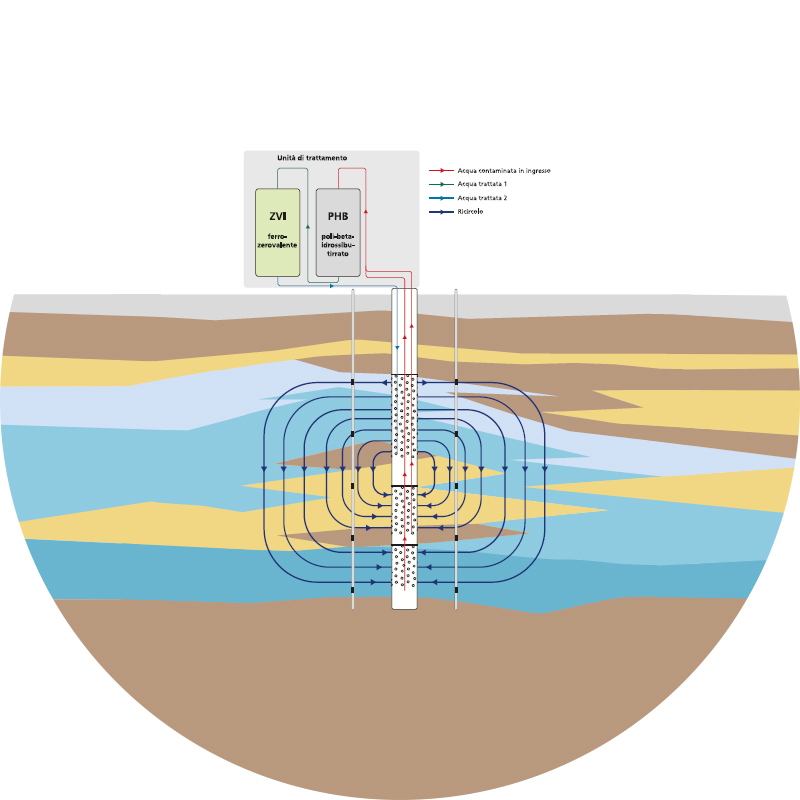The Patent
Patent developed with the contribution of MIUR. Trireme, for providing consultancy on a wide range of remediation methods of remediation, can count on the exclusive rights of a patent developed with the contribution of MIUR and filed in 2017.
Our method lies in the hydraulic manipulation of the aquifer, with recirculating wells and no net water extraction, to effectively mobilise contaminants trapped in areas of low permeability. Recirculation allows electron donors to be distributed directly in situ to stimulate dechlorinating biological activity. This is achieved through the continuous fermentation of a biodegradable polymer, PHB, poly-beta-hydroxybutyrate. An iron-zerovalent reactor completes the process by removing the mobilised contaminants before returning the treated water to the aquifer.

Innovative
t uses the advantageous coupling of the hydraulic manipulation of the aquifer with GCW-IEG wells with the stimulation of biological reductive dechlorination in situ by fermentation of a biodegradable polymer obtainable from organic waste degradation. The process takes place without net water extraction.
Applicable
The process is potentially applicable in all aquifers contaminated by chlorinated solvents in which there is a minimum natural dechlorinating activity and is above all aimed at the elimination and containment of active secondary sources, in particular for situations of historical contamination.
Tested
The patent has already been extensively tested at the pilot scale with excellent results and for two years has been applied at full scale in an important industrial site active on the national territory, included in an Operational Safety Implementation procedure.
Sustainable
The process does not generate waste water, uses a biodegradable polymer and minimizes the production of waste. Reduces the mass of contaminants in the source and at the same time hydraulically controls and significantly reduces the mass flow of contaminants to external areas.

